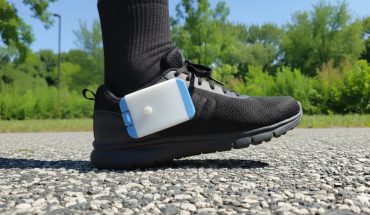As organizers of Earth Day prepare for this, the 55th anniversary of the global eco-friendly day of action and awareness, they urge us to remember that it’s every day, not just today, that the Earth needs a little care and attention.
Events here and around the world remind us that seemingly small lifestyle choices can have a significant impact on our planet, not the least of which are the gadgets we buy and tech gear we use.
Trends that see educated consumers increasingly looking for clean, green products show we are more and more aware about the environmental impact of our shopping habits and product purchase decisions.
In response, many electronics companies have adopted more sustainable practices, like using recycled materials in their products, reducing the energy consumption of their manufacturing processes, and designing products that are easier to recycle, refurbish, or repair. Such practices can have a positive effect on their bottom line, while bringing them a distinct eco-advantage in the marketplace.
Companies like Apple, HP, Ricoh, Samsung, LG, Fairphone, Microsoft, Kensington, Lenovo and many others are often included on the lists of cleanest and greenest, the most energy efficient, even the most ethical of tech companies, as a result of taking such eco-friendly initiatives with their product development, manufacturing, and marketing strategies.
For example, Apple 2030 is that company’s plan and target to bring its overall net emissions to zero, using a combination of recycled and renewable materials, clean electricity and lower-carbon shipping to make and distribute its products.
Samsung says it is reducing carbon emissions, utilizing recycled materials, and managing e-waste on its way to a 100 per cent renewable energy usage plan.
Kensington has a new line of consumer, office, and small business products in which recycled and forest-friendly materials materials are used to an even greater extent as a way to reduce the environmental impact of its products and packaging.
Enter our contest to WIN a Kensington EQ 14″ Laptop Backpack with Padded Straps and Breathable Mesh Fabric, made from 14.5 x 250ml plastic bottles.
Asus says its on track to meet its goal of 100 per cent renewable energy, both in its Taiwan plants and global activities, and it makes recycling and refurbishing a part of its eco-friendly laptop advice and strategy.
And smartphone maker Fairphone looks to its supply chain to manage its eco-impact, saying its road to carbon-neutrality emphasizes the use of fair, recycled, and responsibly mined materials in its phones and products.
From how they are made (and what from) to how they are disposed of (and where), there is greater attention being paid to the full lifecycle of our e-toys and tools, from the extraction of raw materials used in manufacturing and packaging, through production and distribution, the actual use of the product, and the damaging environmental and economic impact of electronic waste.

Requirements that manufacturers take responsibility for collecting and recycling their products when we’re done with them is one way to battle growing electronic waste.
Often prodded by eco-advocacy and citizen action groups, new government regulations on the electronics industry have been put in place to reduce tech’s environmental impact, from restrictions on using certain hazardous substances in the making of electronic products to requirements that manufacturers take responsibility for collecting and recycling their products when we’re done with them.
(Here in Ontario, companies that manufacture and sell electrical and electronic equipment, including information technology, telecommunications, and audio-visual gear, are legally and financially accountable for the collection and management of such products at their end-of-life. Under the Electrical and Electronic Equipment (EEE) Regulation, electronics producers must report every year on the amount of electronics they supply in the province, and how they meet the resource recovery requirements.)
Understanding the lifecycle of an electronic product and its impact on the environment and human health is complicated, researchers say, and interdisciplinary expertise across engineering, ecotoxicology, material science, sociology, economics, and health and medical sciences, is required to learn more about sustainable electronics.

The UNESCO Chair in Green and Sustainable Electronics looks at ways to design, produce and deliver electronic devices with a small environmental footprint.
Canada is leading the way in helping amass that expertise, as it current holding the prestigious UNESCO Chair in Green and Sustainable Electronics (GSE). From international mineral extraction processes to local recycling efforts, GSE looks at ways to design, produce and deliver electronic devices with a small environmental footprint.
Dr. Clara Santato, Professor in the Department of Engineering Physics at Polytechnique Montreal (University of British Columbia is another involved Canadian academic institution), wants to develop innovative and pragmatic solutions to problems associated with the electronic equipment lifecycle, and to transform the production, consumption and management of such devices through education, technical solutions and social innovations.
All that being said, all those green tech initiatives being underway, it’s still the fact that the most eco-friendly product, the one with the least impact on the planet, is the one you don’t buy.
Or at least, the one you don’t buy brand new.
Researchers at UNESCO and elsewhere know that every new gadget has an environmental cost in terms of its manufacturing, shipping, operating life, and, eventually, its end-of-life as waste.
So keep the tech you have now. Repair if possible. Or buy refurbished, recycled products when appropriate.
And do celebrate Earth Day every day.
# # #
A Day, a Month, A Permanent Home for Interactive Earth Exhibit
With all the talk today about technology and consumer electronics and the eco-challenges they present, one event is making full use of augmented reality, virtual reality, projection mapping, and interactive environments to convey a green message.

Arcadia Earth is a multi-sensory journey that combines creative art installations and interactive technology to talk about the Earth and its environment.
It’s called Arcadia Earth, and it’s described as a multi-sensory journey that combines creative art installations and exciting technology to inspire visitors to take action for a more sustainable future. It’s the first immersive environmental art exhibit to use the Microsoft HoloLens augmented reality headset to spread awareness about the impacts of climate change.
Having made appearances in New York, Las Vegas, and Saudi Arabia, Arcadia Earth is now making its permanent home at The Well in downtown Toronto, and a special Earth Day ening on April 22 will feature special talks on how to restore the Earth “from the ground up”.
Created by interactive media designer Valentino Vettori, founder of Arcadia Earth, the immersive experience shows the impact humans have on the environment. Interactive installations and exhibition spaces demonstrate how those small lifestyle decisions we make can have a big impact the future of our planet.
# # #
Your Data, Our World: App Helps Track Nature’s Health and Diversity
Across several annual Earth Days – since 2015 in fact – the iNaturalist platform has become one of the most popular and widely used tools to track nature’s biodiversity.

Thousand of people contribute their observations, and tens of thousands of species have been identified, using the iNaturalist app.
Newly designed and updated, the app, available for Apple and Android devices, is used by people to identify plans and animals in the natural world. By tracking biodiversity, by analyzing literally millions of data points submitted through the app, a more accurate and actionable picture of the health of the planet’s flora and fauna is painted.
Thousand of people contribute their observations, and tens of thousands of species have been identified. as part of the Canadian Wildlife Federation’s Observation Nation project. Along with the freely available app, the iNaturalist Canada platform provides open datasets, public APIs and other open-source tools to a networked community of data repositories, like NatureServe Canada, Canadensys and the Global Biodiversity Information Facility, where researchers, environmentalists, and scientists make use of the submitted data.
iNaturalist Canada is led by the Canadian Wildlife Federation (CWF) along with Parks Canada, NatureServe Canada and the Royal Ontario Museum (ROM).
-30-




